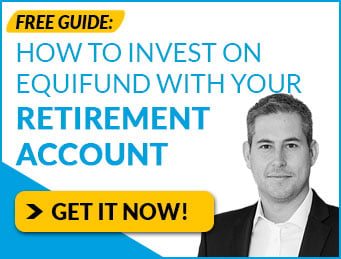In many ways, “not paying taxes” is probably the single best wealth-building cheat code there is.
But after reading pretty much every “how to not pay taxes” book I could get my hands on, here are my three biggest takeaways about legally avoiding taxes.
- I’m currently neither poor enough, nor rich enough, to truly pay ZERO taxes. However, with forward-looking planning, there are relatively easy ways to reduce or mitigate my tax burden.
- Apparently, the very best tax breaks are typically offered to entrepreneurs (i.e., Producers) and investors (i.e., Bankers), of which the costs are inevitably passed on to Consumers in the form of individual income taxes and payroll taxes.
- The best way to pay no income tax is to have no taxable income. If you can’t do that, the second best way is to shift income from higher tax brackets into lower tax brackets (or otherwise make use of credits and deductions).
While we can debate the unfairness that is the tax code, it is my opinion that the tax code is designed to reward business owners and investors, while reinforcing certain desired behaviors (like creating jobs, housing and other useful buildings, and goods and services).
That’s why it’s no surprise to me that the vast majority of families with $5m+ in net worth, built their wealth through ownership of an operating business.
Not only do these assets function as a “money machine” that can generate passive income for its owners…
With strategies like “Buy, Borrow, and Die,” they offer an incredible advantage when building generational wealth.
But if you were starting from scratch, and wanted to pick the very best business model to build generational wealth, what would it be?
The Money Business.

In a nutshell, this is how a Family Office helps to build and maintain generational wealth – it acts as a Family Bank (among other things).
And in today’s issue, we’re also going to talk about some of my favorite ways retail investors can keep more of what they earn through relatively straightforward tax reduction strategies.
Let’s dive in,
-Jake Hoffberg
The Wealth Machine Blueprint
For those of us seeking to build generational wealth, in my opinion, the most difficult thing to do is take an active approach to converting money into assets.
Inevitably, this often means ruthlessly widening the gap between what you spend and what you save (aka “free cash flow”), and then investing your savings to earn a reasonable rate of return.

I know this might seem a bit obvious, but the biggest contributors to building wealth are
- Starting Early: Time can be your greatest friend or your worst enemy. There is simply no substitute for compound interest
- Your Savings/Contribution Rate: The more money you put to work in compounding, the more wealth you can build
- When You Retire: Depending on a lot of factors, it may make sense to delay retirement to increase potential benefits from programs like Social Security
- Lifetime Earning Potential: If you are still of working age, increasing your earning potential is often one of the best investments you can make over both the short term and long term
As we’ve discussed before, Producers and Bankers are constantly conditioning Consumers to borrow and spend money on consumption – not investing.
Inevitably, this means if we want our money to work for us, instead of us working for money, we have to play a different game than the one many of us have been taught to play.
I think we cannot find enough motivation [for] why we should put away more of our money to[ward] the future instead of spending it today.
Wealth Machines make our intangible digital money into a more tangible object that provides an important use [which] a lot of people are looking for…
An object that helps you generate recurring income away from your main job.
Instead, it is an asset whose express purpose is to turn money into more money.
In order to do this, the Wealth Machine must operate using rules, systems, and processes based on the knowledge, skills, and abilities you’ve acquired during your lifetime.
As the value of this asset grows, you can then use this asset to distribute wealth to the owners.
In other words, a Wealth Machine is an operating company of which YOU are the manager.

Source: Investment Moats
Operating this business is simple (although not necessarily easy).
- Raise Capital: The primary source of funds will come from either your personal savings, deposits from family members, or borrowed funds
- Deploy Capital: You can either hold funds in cash (or cash-like instruments) or convert cash into financial assets or securities
- Manage Assets: When your financial assets produce interest, income, dividends, rental income, or capital gains from a sale, this cash is recycled into the machine to further compound (or otherwise distribute)
The key to this Wealth Machine is to get as much of your wealth compounding at as high a rate as possible, and for as long as possible, without interruption.
Inevitably, this means doing whatever it takes to reduce “fee drag” from transaction fees, management fees, carried interest, and most importantly… taxes.
The Truth About Taxes (and how to pay less of them)
Looking for a proven way to have tens of thousands of dollars hit your bank account each month, with zero work from you, starting as soon as tomorrow?
If so, you’ve probably seen no shortage of hucksters selling the secret to achieving the holy grail of financial freedom – passive income.
Spoiler Alert: there is no such thing as truly “passive income,” where you do absolutely nothing and money just rolls in, forever and ever, with no additional work.
All income requires someone, somewhere, at some point in time, to perform some kind of “work.”
This means what we are really trying to achieve is the maximization of the dollars we earn per hour “worked.”
While there is a saying “There is no free lunch in investing” – meaning, you cannot gain a profit without risk – there is most definitely a free lunch when it comes to the tax code.
[Legal disclaimer: I am not a tax advisor and am not licensed to give tax advice. Please talk to a professional about your specific situation.]
So let’s talk about what passive income REALLY is (and the best way to obtain it).
Passive income is, in many ways, a tax scheme that overwhelmingly benefits Bankers for the “work” they do.
Here’s what I mean…
In the United States, we use what’s called a “progressive tax system,” where individuals or entities with more taxable income pay higher tax rates than those with less taxable income.

In 2022, the top 1% of taxpayers generated ~24% of all federal tax revenue.

However, not all income earned is taxed at the same amount. Instead, income is taxed in brackets, at different rates per bracket (which is called the“marginal tax rate” or “statutory tax rate”)
As an example, the chart below shows a married couple with two children earning a combined salary of $110,000.
They face a top marginal tax rate of 22%, so they would commonly be referred to as “being in the 22% bracket.”

However their average tax rate (or effective tax rate) — the share of their total income that they pay in taxes — is only 6%.
The chart below, from the Peter G Peterson Foundation, shows the effective tax rates across households.

The same concept applies to corporate taxes. The federal statutory corporate tax rate is currently set at 21% – reduced from 35% by the 2017 Tax Cuts and Jobs Act (TCJA).
However, the U.S. tax code has many preferences that affect the rate actually paid by corporations; the average effective tax rate for corporations was 19.7% in 2021.

How is this possible? It’s because not all income is taxed the same way.
And the secret to tax-advantaged wealth building is understanding how income is taxed.
These tax breaks (aka “tax expenditures”) reduce tax revenue by more than $1.7 trillion each year – more than any single agency or spending program in the budget, including Social Security, Medicare, and the Department of Defense!

Tax expenditures are often “spending in disguise” because they are used by Congress to direct resources to specific constituencies and priorities — much like spending programs. Many of those expenditures are essentially subsidies for favored activities. Source: Peter G Peterson Foundation.
Not surprisingly, high-earning households disproportionately benefit from these tax expenditures; the top 20% of earners receive half of all tax breaks (by total dollar amount).

To be clear, I have no qualms about paying the minimum amount of tax I am legally obligated to pay…
Especially knowing how much of our tax revenues go to finance the American war machine.

My personal belief is that the tax revenue I’m not sending to the government – which I arguably obtained by taking advantage of the incentives provided by the government to provide society with jobs, housing, and other useful goods and services – can be better used by me, than by unelected bureaucrats.
So the question becomes, how can people like us take advantage of the same legal tax breaks Insiders and Elites use to build generational wealth?
Answer: Owning operating companies and pass-through entities that allow for favorable tax treatment.
Tax Shifting and Asset Transfer Strategies
Income shifting (aka “income splitting) is the process of shifting income from higher tax brackets into lower tax brackets.
Probably the best-known example of income shifting is shifting income away from high-tax-bracket earners to low-tax-bracket earners (like children and retirees).
Often, this transfer is handled by a trust, under the Uniform Transfers to Minors Act, or in the form of a gift under the Uniform Gifts to Minors Act.
However, if you own a business, you can also hire these relatives, and pay them a salary.
For example:
- Hire your children (provided they are bona fide employees and compensation is reasonable): pay them up to the standard deduction – in 2023, that is $13,850, which would not be taxed – and then max out the child’s Roth IRA contribution (for 2023, $6,500), where it can continue to compound on a tax-free basis.
In my opinion, this limited liquidity provision makes the Roth IRA an excellent savings account that can be used to help finance larger ticket items later on in life (for example, college).
Moreover, if your child is under 18, you won’t have to withhold or pay any FICA (Social Security or Medicare) tax on the salary, subject to a couple of exceptions.
You get no business deductions when you pay your child for personal services, such as babysitting or mowing your lawn at home. However, they can be paid to perform yard work for (or otherwise clean) a business property.
You can also pay them to do “modeling” for photographs on your website, via an “image agreement” that pays an ongoing licensing fee for fair use.
In addition to your children, if you are in any way financially supporting relatives with after-tax dollars – for example, retired parents who likely pay little to no taxes – this can be a tax-advantaged way to help them with their costs of living.
But transferring INCOME is just one way to move money around in a tax-advantaged way…
The other way is to transfer ASSETS (like dividend-producing stocks).
More specifically, the use of pass-through entities.
The 2017 tax law created a new deduction for certain income that owners of pass-through businesses (partnerships, S corporations, and sole proprietorships) report on their individual tax returns; previously, that income was generally taxed at the same rates as wage and salary income.
Heavily skewed in favor of high-income people, the deduction effectively cuts the top tax rate on this pass-through income by 20 percent, to 29.6 percent, compared to the 37 percent top rate that applies to wages and salaries.
But generally speaking, wealthy people are far more likely to have pass-through income than other people; the top 1% are over 50 times more likely to have partnership income than people in the bottom 50% of the income spectrum.

I’m not going to argue either for or against the nature of whether these deductions are a good thing for the economy, simply that they exist (and I plan on taking advantage of them).
The question becomes, what are the best pass-through entities to use for building generational wealth?
- The S-Corp Strategy: If a sole proprietor wants to retain control of his or her business while splitting the income from the business, he or she may achieve this by setting up an S corporation. In S corporations, income flows through to the owners.
Income can be split after the S corporation has been established. Shares of stock can be gifted to a family member. The initial distribution of shares to a relative would be classified as a gift; the annual income from the gift would be reported on the family member’s individual Form 1040 return, and be taxed at the relative’s tax rate.
But beware of the kiddie tax.
- Family Limited Partnerships (FLP): By pooling your investments in a special type of legal structure, you can transfer assets – such as stocks, bonds, real estate, art, and collectibles – to heirs in a tax advantaged way.This is done by gifting partnership equity each year up to the gift tax limits (In 2023, $17,000 per parent for up to $34,000 per year, per child).
An FLP is often used to shift present business income to lower-bracket family members. The parents are named as the general partners (GPs), and the children are the limited partners (LPs).
In other words, the children have no right to manage the business – they are treated like investors who have an ownership interest in the business only.
By gifting shares rather than assets, your heirs will receive all dividends, interest, capital gains, and other profits from their ownership stake. That means the future returns will accrue to their benefit.
It will also be excluded from your estate for tax purposes, creating a virtuous compounding cycle.
You also can use an FLP along with other investment tax strategies and structures, such as charitable remainder trusts, deferred tax liabilities, or the stepped-up basis loophole.
Even better, because the FLP is likely an illiquid asset, you can typically claim a “discount for lack of marketability” (DLOM)… further reducing the potential tax burden of transferring assets to the next generation!
This is definitely one of those “talk to a qualified professional about how to use these strategies for your personal situation” things.
You’ll want to make sure you avoid any of the landmines that could trigger taxable events you weren’t expecting.
But the real cheat code comes from the method in which you earn the income in the first place.
Here’s what I mean…
There are three types of income you can earn: Active Income, Passive Income, and Portfolio Income.
- Active Income comes from what’s called “ordinary income” – things like wages and salaries earned from an employer – and is subject to a 10% – 37% tax
- Passive Income – defined by the IRS as either “net rental income” or income from a “business in which the taxpayer does not materially participate” – is subject to a 0% – 20% taxNotably, you can also engage in something called “Self-charged Interest” – which can be derived from loaning money to your own business and paying yourself interest on the loanAccording to the IRS, “Certain self-charged interest income or deductions may be treated as passive activity gross income or passive activity deductions if the loan proceeds are used in a passive activity.”
- Portfolio Income – which includes dividends, interest, capital gains, and royalties – can be taxed at either short-term or long-term capital gains rates, depending on a variety of factors
To put this in plain English, the most common way to earn passive income is by owning commercial real estate and businesses!
But there’s a catch you need to be aware of: “material participation.”
For the self-employed, or anyone else with an ownership interest in a business, the standards for material participation include:
- 500+ hours toward a business or activity from which you are profiting
- If participation has been “substantially all” of the participation for that tax year
- Up to 100 hours of participation, and at least as much as any other person involved in the activity
- Material participation in at least five of the past 10 tax years
- For personal services businesses, material participation in three previous tax years at any time
Or again, put in plain English, if you are a legitimate “investor” and not a “manager” of the business operation, broadly speaking, any income earned will likely count as “Passive.”
And if you’re playing the Game of Money as the Banker – instead of Consumer or Producer – this adds another exceptionally favorable tax treatment to your business activities.
According to the tax code…
You don’t treat the work you do in your capacity as an investor in an activity as participation, unless you’re directly involved in the day-to-day management or operations of the activity.
Work you do as an investor includes:
- Studying and reviewing financial statements or reports on operations of the activity,
- Preparing or compiling summaries or analyses of the finances or operations of the activity for your own use, and
- Monitoring the finances or operations of the activity in a nonmanagerial capacity
This means that if you’re the Banker earning “2 and 20” on the money you manage, the 2% management fees are counted as ordinary income…
Under current tax law, the carried interest (20% in this example) paid to fund managers is taxed as if it were a profit from a long-term investment rather than what it is: performance-based compensation for provided services (managing other people’s money).
This distinction allows the general partners to almost halve their tax bill, by paying a 20% long-term capital gains rate instead of the ordinary income tax rate of 37%, that would otherwise likely apply to these top earners.

In effect, this cuts the tax bill in half for private equity Barrons, at the expense of the LPs.
For this reason, it is my opinion that the more we seek to build wealth the way Bankers do – and the more we can take advantage of the tax breaks that Insiders and Elites do – the easier it becomes to build generational wealth.












